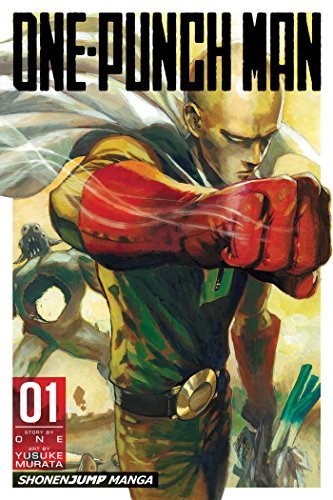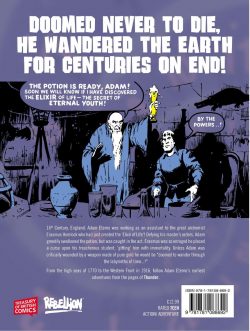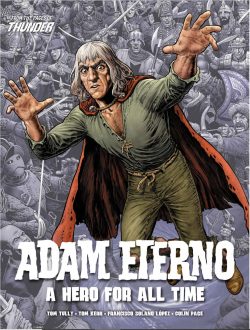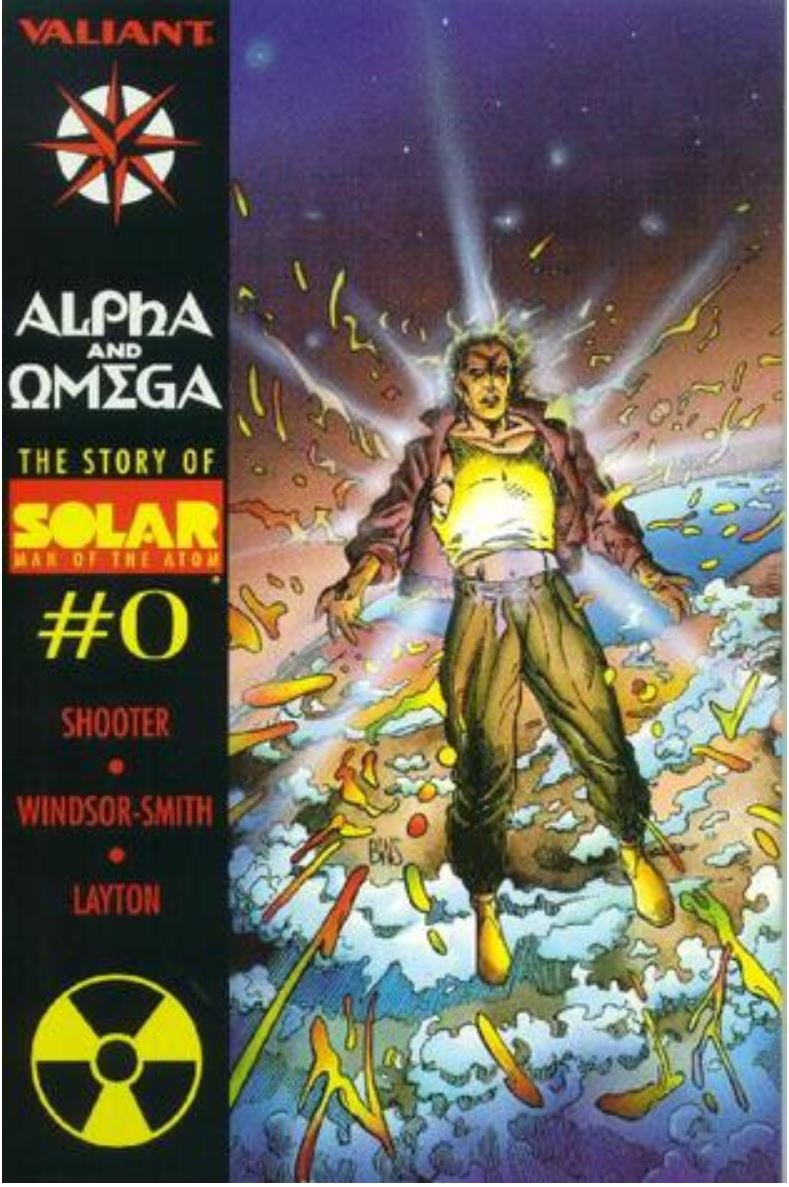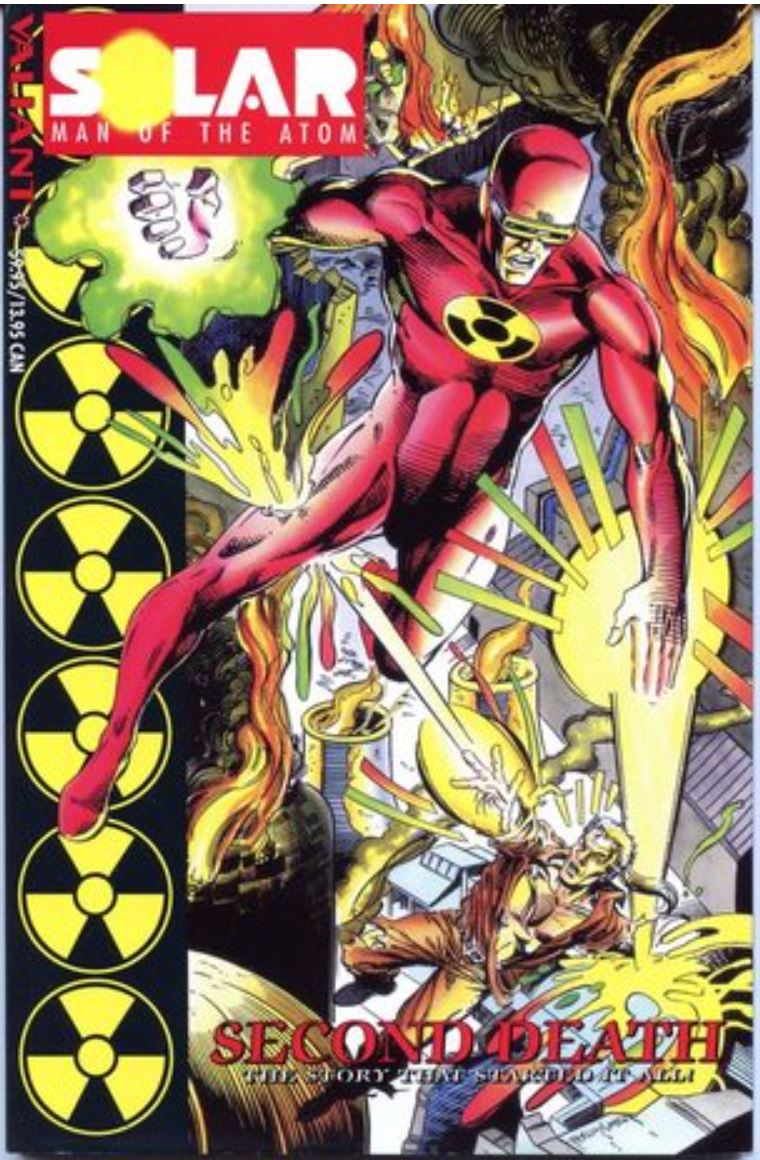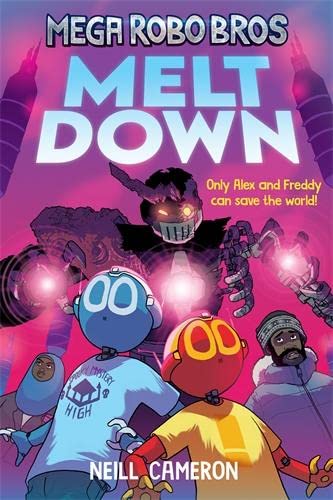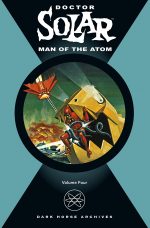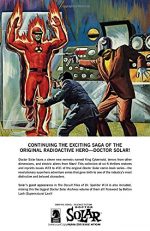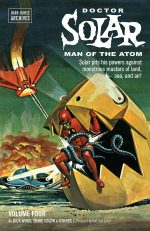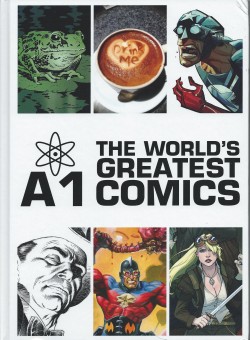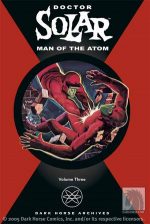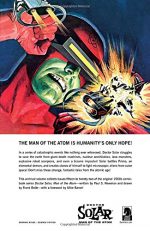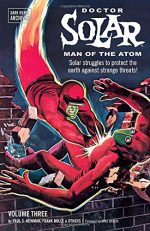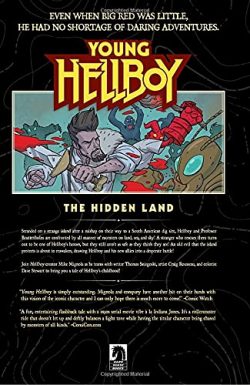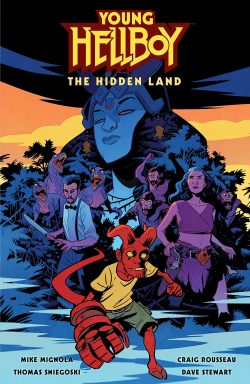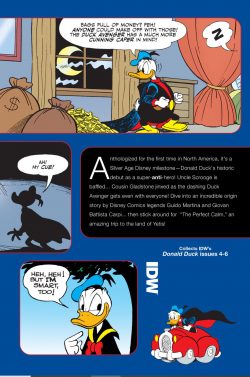
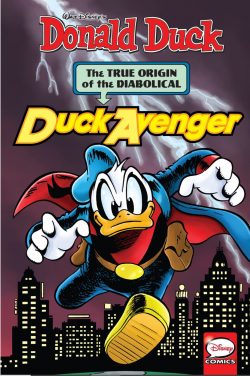
By Elisa Penna & Guido Martina, Don Christensen, Daan Jippes, Dick Moores, Rodolfo Cimino, Giovan Battista Carpi, Mau Heymans & Kirsten de Graaff, Romano Scarpa, Sandro Del Conte, Paul Murray, Harry Gladstone, Wilfred Haughton & various: translated by Gary Leach, Byron Erickson, Thad Komorowski, & Joe Torcivia (Disney Comics/IDW)
ISBN: 978-1-63140-480-1 (TPB/Digital edition)
The animated wonders of the Walt Disney studios quickly travelled around the world, but much of their popularity and longevity was due to syndicated newspaper strips and comic book stories that expanded and enhanced character and adventure between cinematic releases. These ancillary exploits were particularly loved and venerated in Europe where Italy, Germany, France, The Low Countries (that’s the Benelux region of Belgium, Luxembourg and the Netherlands), Britain and especially the Scandinavian countries all made them their own, with supplemental new adventures and frolics that often surpassed the efforts of all but Carl Barks and Floyd Gottfredson themselves.
During the latter part of the 20th century Disney US downsized their own comics output, and Barks and latter-day American giants like Don Rosa graduated to producing new material for the monumental continental Disney Comics publishing machines such as the Gutenberghus Group and Disney Italia.
Eventually, someone in charge in the US saw sense; okaying a revival of Disney’s English-language comics and enabling years of that Continental canon to be seen stateside in comic books and collected albums such as this one celebrating the peculiar peregrinations of the Angriest Duck in the World…
Bold, brash, lightning-paced, visually spectacular and hilariously funny, this compilation re-presents IDW’s Donald Duck #4-6 (which equates in the original number sequence to issues #371-373) released in 2014.
Unless you count their 1950s live action Zorro TV show and it’s superb comic book spin-off, Disney had embraced supervillains like the Phantom Blot long before it started dabbling with such unbelievable characters as costumed heroes (such as The Incredibles or those Avengers types). When they did dabble, it did all started in a circuitous manner with the 1965 debut of Super Goof (of whom, more another time) and a bizarre publishing blip starting in and founded on European tradition…
It’s on review today primarily because it fits our strange brief of the week “Un-American Superheroes”: featuring the premiere and origin of a costumed vigilante who took Italy by storm on his first appearance in June 1969: Paperinik Aka PK – the Duck Avenger. He was a surprise hit and returned many times across the continent, alternatively known as Superduck (UK), Phantomias (Germany), Phantom Duck (Greece), Stålanden (Denmark), Stål-Kalle (Sweden), Taikaviitta (Finland) and Fantonald (Norway)…
Crafted by editor Elisa Penna and scripter Guido Martina with art from Giovan Battista Carpi, the saga appeared as two extended chapters in Topolino #706 -707 (June 8th & 15th 1969) entitled ‘Paperinik il diabolico vendicatore’ (“Paperinik the diabolical avenger”). It opens this collection as ‘The Diabolical Duck Avenger’, detailing how Donald’s daily woes and misfortunes finally get the better of him, just as his luck turns.
Through highly suspicious means and after gulling arch rival Gladstone Gander, Donald takes possession of dilapidated mansion Villa Rose, and soon discovers it was the hideout of legendary turn-of-the century gentleman thief, super criminal and social justice warrior Fantomallard (based on French literary character Fantômas created by Marcel Allain & Pierre Souvestre in 1911).
Beguiled by the master bandit’s diary and left over gadgets, and provoked beyond endurance by Gladstone, whining nephews Huey, Dewey and Louie and especially constantly grasping Uncle Scrooge, Donald snaps. Supplementing his ancient arsenal with gadgets innocently built by inventor Gyro Gearloose, the deranged duck prowls the night clad as the vintage villain, inflicting well-deserved punishment on all those who have wronged him in the chilling guise of the Duck Avenger…
The saga pauses here for a comedic change of pace palette-cleanser as Don Christensen & Paul Murray detail a case for Ludwig Von Drake: hired by Grandma Duck to cure practically somnolent and sleepy Gus Goose in ‘Chore Chump’. Tragically, the doctor’s sound psychological theory is utterly wasted on the dozy oaf and more drastic methods have to be employed…
‘The Diabolical Duck Avenger Part Two’ explores and explodes the vigilante’s reign of terror, as Donald in Disguise swipes Scrooge’s money-stuffed mattress, perplexes the police and frames Gladstone before smugly retiring to anonymity. However, the Avenger would return over and again, always slightly askew of general Disney Comics continuity, and ultimately begin his own sidebar career as a Duck Knight of Justice in a dark Disney world via the stand-alone title PK – Paperinik New Adventures which launched in 1996…
We might be a bit baffled, but Italian readers would have instantly grasped that “Paperinik” was a devilish spoof of vastly popular cultural antihero Diabolik as created in 1962 by Angela & Luciana Giussani. The ruthless super-thief is one of the most successful characters in Italian comics with over 800 volumes to his canon…
Here and now, though, Daan Jippes delivers a ‘Banquet Behind Bars’ as Donald and the Nephews dine out on the cash culled from a lost wallet and too late discover who the original owner is, after which Dick Moores describes a golf gulf on ‘Donald’s Off Day’ prior to Harry Gladstone revealing the Nephews’ ‘Birthday Bugaboo’ as they try to hint just how much they want a puppy. The result – as always – is spectacularly unlucky for their grouchy guardian…
‘What’s Opera, Duck?’ by Mau Heymans & Kirsten de Graaff explores the unwise idea of wearing a hat wired for sound and the big sporting fixture whilst attending the Met with Daisy Duck, and leads into another extended saga with Donald again in the role of uncanny-powered iconoclast in ‘The Perfect Calm! or Are We There, Yeti?’ by Rodolfo Cimino, Romano Scarpa & Sandro Del Conte.
It reveals how the ever-enraged Donald meets a swami who teaches him the calming power of transcendental thought and sets him off in search of further ultimate enlightenment. Transformed, the formerly irascible reprobate becomes a globe-trotting nomad whose travels take him to Tibet and an unlikely alliance with not-so-abominable snow persons and ski-horned goats.
Typically, when he returns home Donald is suckered into becoming a cash cow for Scrooge who devises a means to monetise peace and contentment for maximum returns, only to trigger global economic chaos and a heap of bad karma…
The cartoon capers conclude with a delicious treat from 1937 courtesy of the British franchise wherein Wilfred Haughton perfectly preserves the cosy chaos of screen stars Donald, Goofy, Mickey and his nephews in a picnic packed with problems entitled ‘Hampered!’
Graced with a superb art-gallery of covers & variants by Dave Alvarez, Ronda Pattison, Amy Mebberson, & Derek Charm, this is an exciting, exotic and eye-popping riot of raucous romps blending wit, madcap invention, plucky bravado and sheer wide-eyed wonder into a rollicking rollercoaster ride for readers of every age and vintage.
© 2015 Disney Enterprises, Inc. All rights reserved.

